This lesson is a direct follow on from our Rudimentary Jazz Groove lesson in which I showed how the right hand and left foot work in this style of beat. On this page I will give you a simple introduction as to how snare placement works by adding some very straight forward quarter notes. The parts on this page will involve adding to the lesson linked above so it is essential that you are familiar with that content before proceeding.
As discussed in our initial jazz groove lesson, this style of music is incredibly different from rock and pop and as such snare placement takes a different approach. In previous grooves, particularly at level 0 and level 1, the snare has been used to emphasize a backbeat and plays an important roll in defining the 'feel' of the timing. In jazz the snare can be used in this way, but rarely is as this roll is taken over by the left foot. That obviously frees up the left hand and in this case allows it to accent and emphasize certain beats, 'fill out' a groove by adding in Ghost Notes, create a bit of melody by adding in some toms and all sorts of other ideas that will be covered later on. The main thing to remember when thinking about the difference between jazz and other styles is that time is kept between the right hand and left foot whilst the left hand and left foot are used for rhythmic and melodic part construction.
Below I have shown some parts that take the basic time keeping pattern from the previous lesson and add in quarter note snares at various points. These patterns are very basic and aren't actually all the common in actual Jazz music but are a very good exercise in starting to familiarize you with these style of grooves. Swing Time Notation short hand has been used in all examples, make sure you are familiar with what this means or you will end up playing the parts in the wrong timing.
Note that the snare and left foot will be falling together in a lot of these examples, make sure they fall exactly in time or the part will be sloppy.
Example 1
A simple one bar groove following the standard rock/pop back beat style placement.
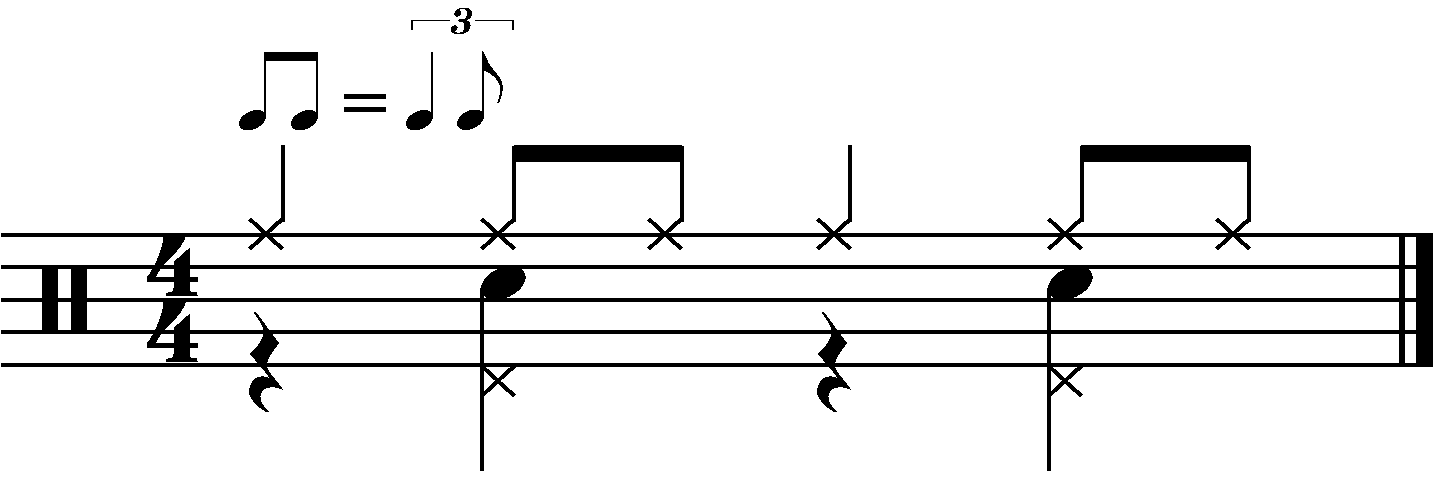
Example 2
One snare on beat 4.
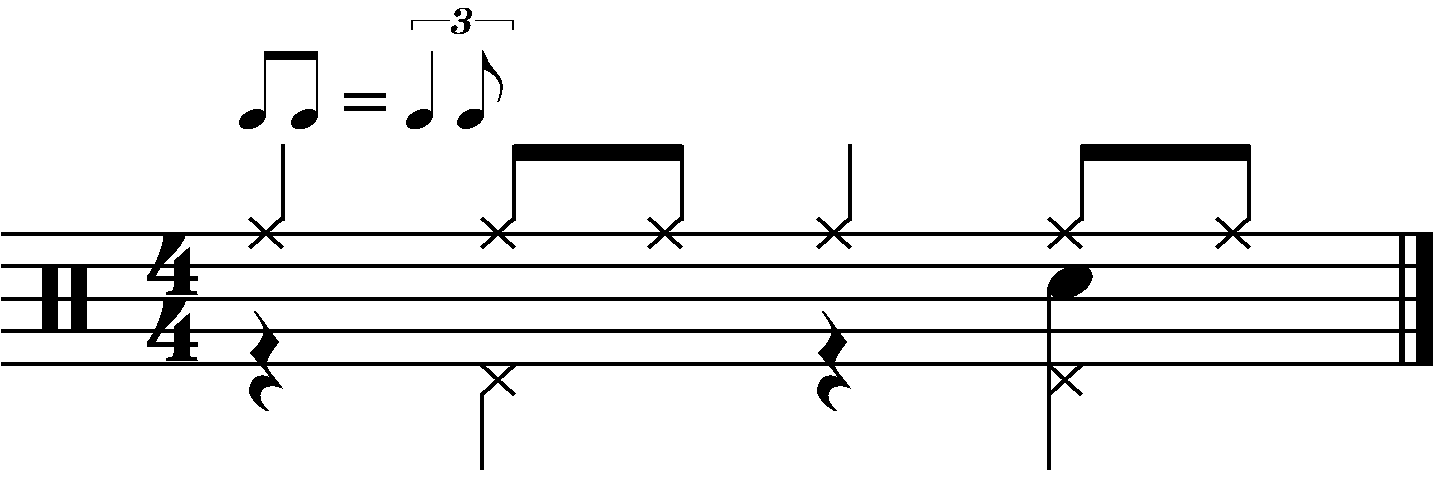
Example 3
One snare on beat 2.
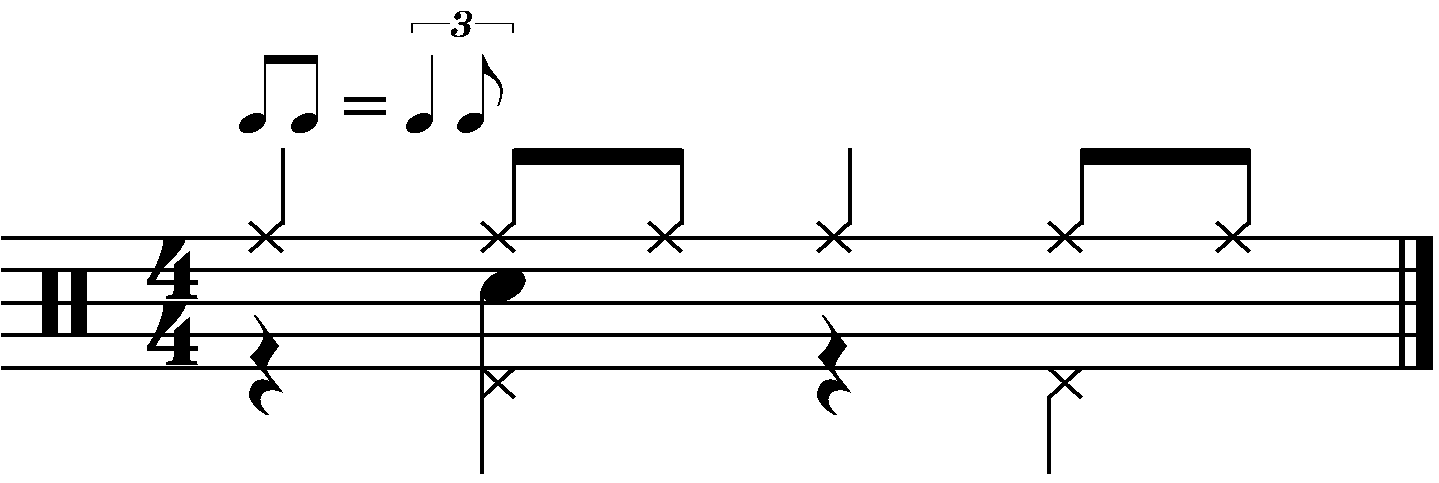
Example 4
One snare on beat 1.
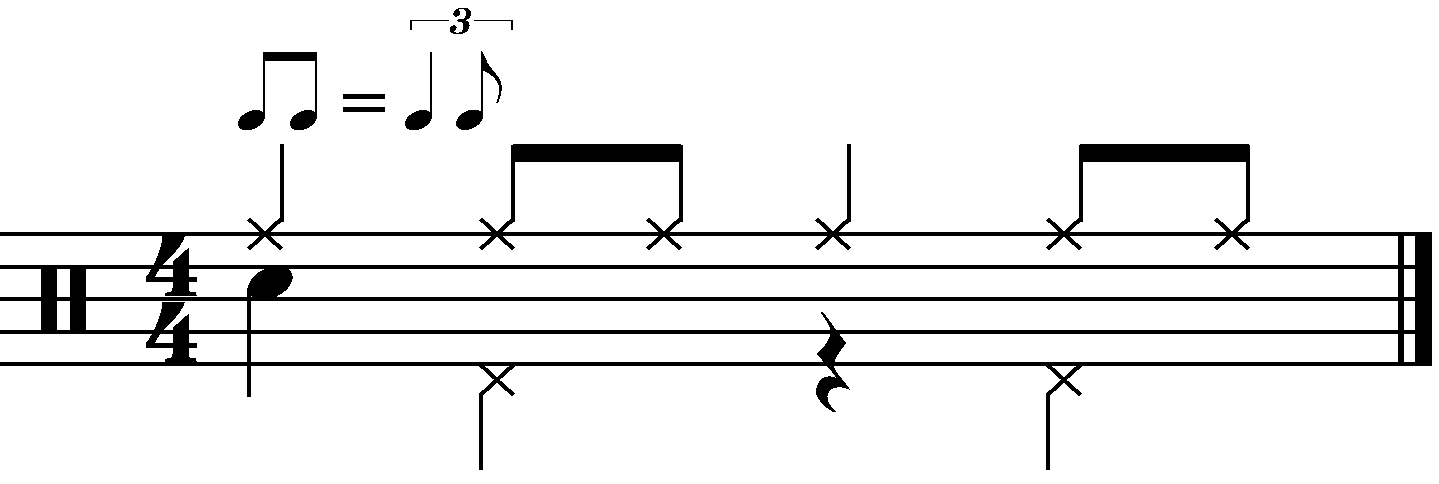
Example 5
One snare on beat 3.
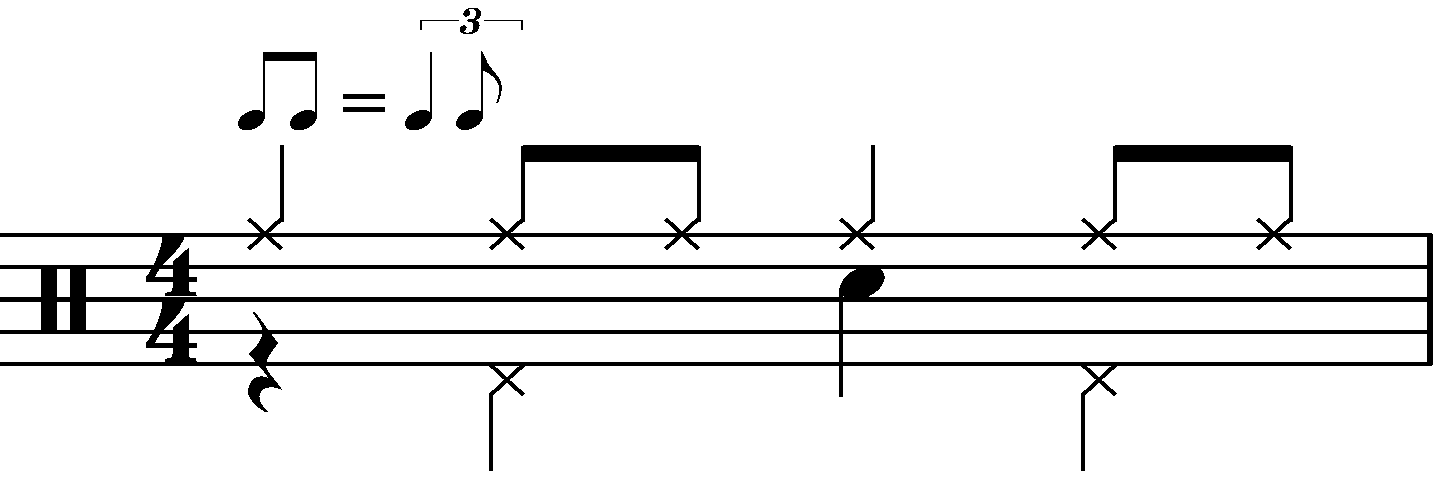
Example 6
Snares on beats 1 and 4, when this pattern is repeated the two snares will be played next to each other.
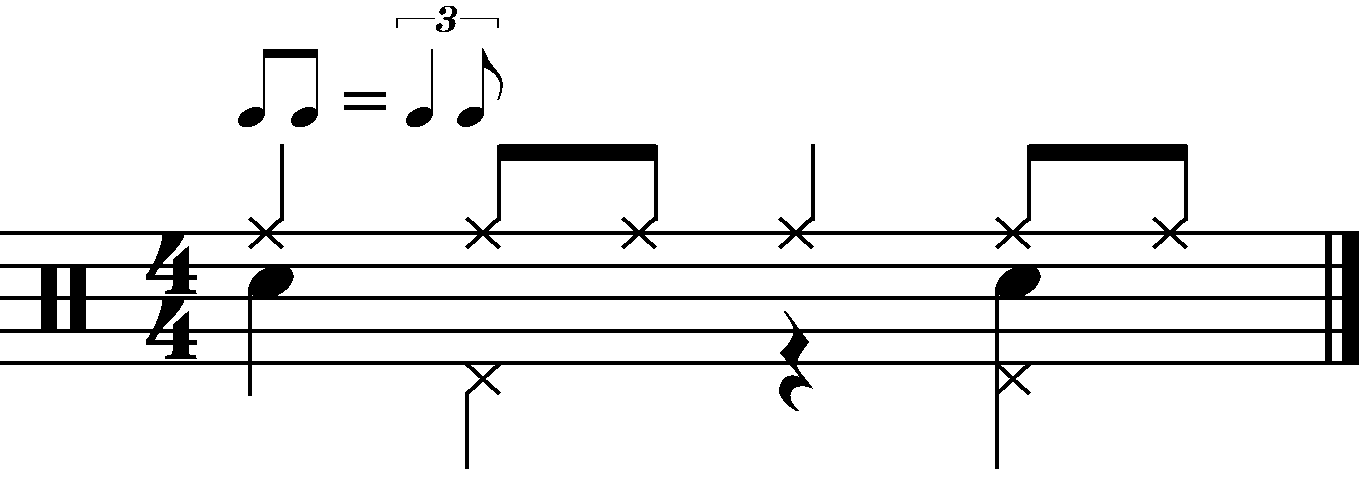
Example 7
Snares on beats 2 and 3.
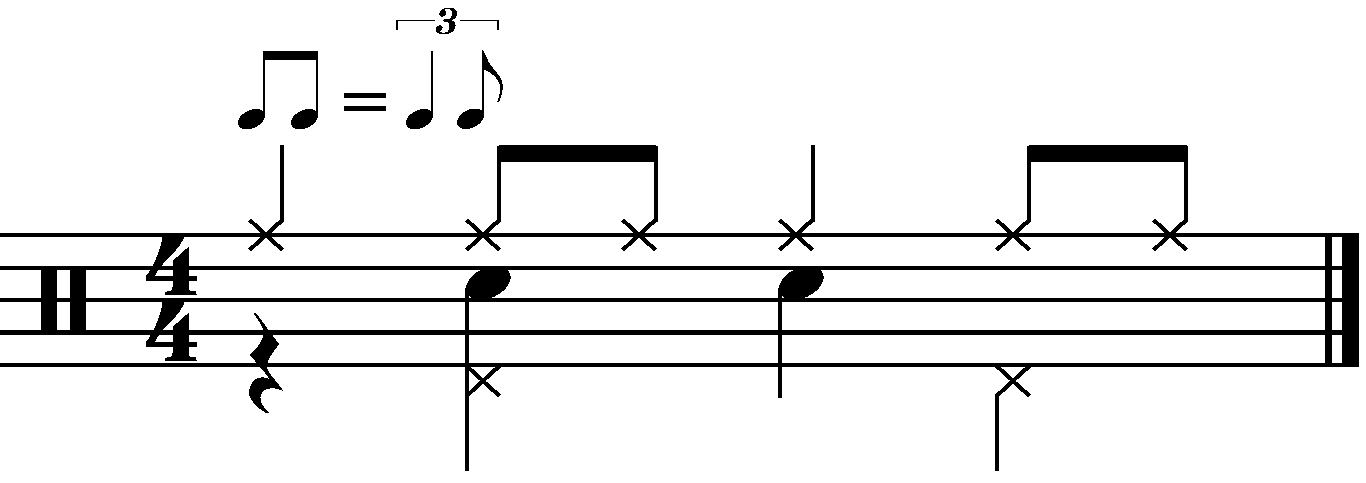
Example 8
Snares on all quarter notes.
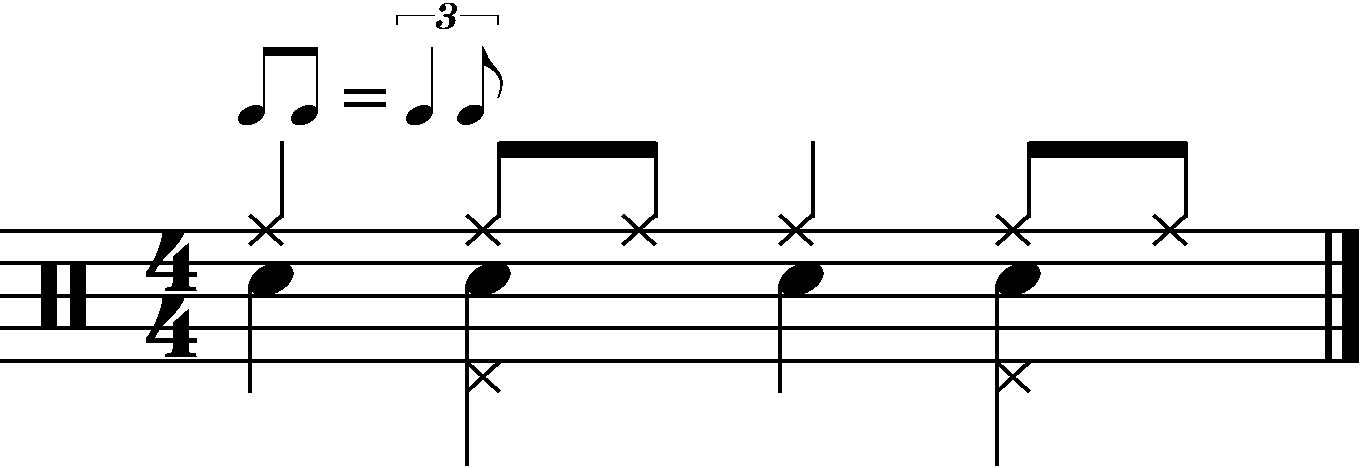
Example 9
A two bar pattern where the snare placement is different in each bar.

Example 10
This is a slightly more complicated example. Again, it is a two bar groove and it uses a slightly Syncopated rhythm with the snares as they play on every third quarter note count. This idea of playing odd rhythms is very typical of jazz and will be explored at great length.

TASK
- Learn the groove at a tempo of at least 130bpm.
- Try adding a kick on beat 1, beat 3 or both beat and beat 3.
- Create your own version of this style of groove either by combining examples given above or by coming up with a new snare placement.

